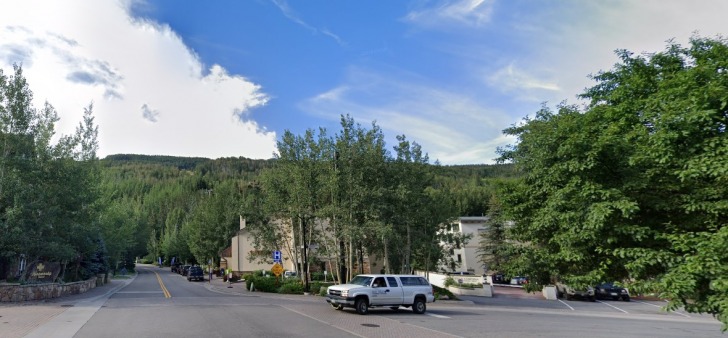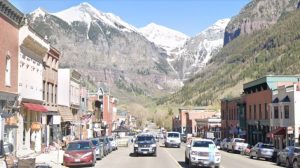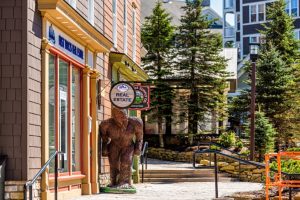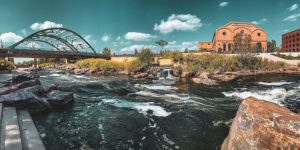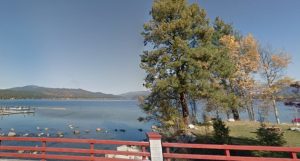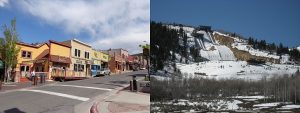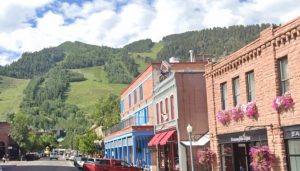 Colorado : Safety by City
Colorado : Safety by City
- Alamosa
- Arvada
- Aspen
- Aurora
- Boulder
- Breckenridge
- Cañon City
- Colorado Springs
- Denver
- Fort Collins
- Grand Junction
- Lakewood
- Loveland
- Montrose
- Pueblo
- Telluride
- Thornton
- Vail
Vail, Colorado might be known for its world-class skiing, but would you ever think this mountain city gets just as many visitors in the summer as it does in the winter?
1.3 million hit the slopes or the hiking trails every year in this small town that’s home to less than 6,000 people.
Vail is the name of the city, but also the name of the ski resort in this picturesque town.
The ski resort was here even before the city was incorporated.
In the mountains, the elevation rises as high as 11,500 feet above sea level – a very dangerous elevation if you’re not acclimated to high altitudes.
It also offers nearly 200 ski trails and seven of them are in the area known as the “back basin.”
Skiing at Vail has been formally and casually called “legendary.”
There’s more to Vail than the mountains, as you’ve also got several villages to explore with their deep-colored Alpine architecture.
Spas await sore muscles from hitting the slopes and there’s also a crackling fire ready to warm up after a cold ride down the mountain.
Summers are filled with hiking, fishing, and mountain biking.
The warm fire is replaced with cold drinks and outdoor music festivals.
While getting to Vail takes a little bit of work, once you’re there you might never want to leave.
Warnings & Dangers in Vail

OVERALL RISK: LOW
There's a low overall risk. This is a place where people go for adventure and relaxation. The crime numbers show you can safely do both without worry. You'll need to be comfortable in large crowds, however, as this place does get packed.

TRANSPORT & TAXIS RISK: LOW
If you fly into Eagle County Regional Airport, you have 72 options of taxis or limos to use to get to Vail. Some hotels offer airport shuttles, so ask when booking. You'll have trouble with rideshares. They aren't allowed at the Eagle County Airport and getting to Vail from Denver is almost three hours, so you'd have to find a driver willing to make the trek. Once you're in town, you can call rideshare but they are hard to come by. Once you're in Vail, there's a free city bus system. All options are low-risk.

PICKPOCKETS RISK: LOW
There were no pickpockets in 2020. I thought that was a bit odd since this is such a crowded tourist destination. Then I remembered that it was a pandemic year, so I checked previous years. Nope, it's not an anomaly. No pickpockets have been reported since at least 2017, giving this a surprisingly low risk.

NATURAL DISASTERS RISK: MEDIUM
Obviously, you're going to see snowstorms in Vail in the winter. Those snowstorms can also be blizzards with insanely high winds. One of the most frustrating parts of being a skier is knowing there are two feet of fresh powder on the mountains but the resorts are closed because of high winds. Roads on I-70 can close too in high winds and blowing snow. Oh, there's also an ongoing risk of avalanches as the snow gets deeper in the season. The summer has another major risk - wildfires. If a wildfire isn't directly threatening the Vail area, the air quality can still get so bad it's hard to breathe, much less hike at 10,000 feet. Due to all this, there's a medium risk and you need to research these very specific risks because they can happen quickly.

MUGGING RISK: LOW
There have only been four robberies since 2010 in Vail, so you've got a very low risk. This must be the most law-abiding group of tourists ever.

TERRORISM RISK: LOW
There's a low risk of terrorists attacking Vail. It's a small town and even when it's fully packed.

SCAMS RISK: MEDIUM
There's a medium risk of being scammed. One scam to be worried about is the rental scam. There are several ways scammers try to offer fake "great deals" on rentals and then ask you to send money via PayPal or Zelle. You should only do business with a trusted website and never fall for emails that have poor grammar. If you think you are booking through a legit website, and then you are taken to another site to offer payment, it might be a scam. Another scam that you might try to pull is borrowing someone's lift pass to save money. Police are really cracking down on this, so don't risk it.

WOMEN TRAVELERS RISK: LOW
Women have a low risk here, but there is a great party vibe in this town. One website even called it a "Cougar Paradise", meaning older women searching for young men. Be sure to limit how much you drink, especially at high altitudes, and always have someone you trust to walk you back to the hotel or rental.

TAP WATER RISK: LOW
The tap water is safe and meets or exceeds all state and EPA standards. There's low risk when using the tap water and remember to stay hydrated.
Safest Places to Visit in Vail
The Vail area is split up into villages along a five-mile stretch of the two-lane road.
The villages are:
- West Vail: A place to pick up the essentials from grocery and hardware stores. Hiking and biking trails are nearby.
- Cascade: A village all its own but with close proximity to the other main villages for easy exploring.
- Lionshead: No cars are allowed in this Bavarian Village with an ice rink, shopping, dining, and nightlife.
- Vail Village: The epicenter of action in the city of Vail. Shops, dining, and nightlife are readily available.
- East Vail: There’s a golf course here with quick access to hiking and biking trails.
Each area is safe and there’s a free shuttle service between all of them, so there’s no reason to drive around searching for an impossible parking spot.
There are eight luxury spas throughout the villages with incredible and unique menus of services, from massages to facials to body scrubs to float tanks.
A particular favorite is the High Altitude Adjustment Massage to work out all the physical effects of the lower oxygen levels at 8000 feet.
If you are (wisely) taking a day or two to acclimate to the high altitude, the Betty Ford Alpine Gardens are a great option to casually stroll among beautiful flowers, plants, and trees.
You might want to consider taking a ski class for beginners or just a refresher course on the first day to get used to being on skis again unless you do this often.
It’s also a good time to get some one-on-one time with instructors to get the lay of the land and top advice for making the most out of your vacation.
More advanced skiers who are here for the first time should take a mountain tour, which lasts about two hours, but you’ll be able to strategize how many runs you want to tackle each day.
Places to Avoid in Vail
There’s not a bad place to stay or visit when you’re in Vail.
All villages have a free bus to take you wherever you want to go.
You can choose from the crowded Vail Village area, or keep some peace and quiet in the east or west end villages.
You’ll be much more worried about breaking a leg than being a victim of a crime.
Vail is globally known for its extensive series of Back Bowls.
This is the place beyond the finely groomed runs facing the ski resorts where experienced skiers rip through fresh powder and take challenging runs, like Forever, which runs 1850 vertical feet, feeling like a neverending ski run in the heaven of the sport.
The Back Bowls aren’t a place for a less experienced skier.
There are no bunny hills here and few things frustrate skiers more than an amateur trying to tackle a run they aren’t ready for and causing a distraction during other people’s runs.
Safety Tips for Traveling to Vail
- Book early, from hotel reservations to lift passes. You’ll get the best deals and avoid sellout periods if you book as soon as possible. Most hotels let you book up to a year in advance. Lift passes purchased seven days before your trip will get the best savings, according to the Vail Ski Resort website. As of April 2022, a 3-day lift ticket is going to cost $465 and a 5-day one is going to cost $700.
- Arrive early at the lifts. Most open at 8:30 am and if you sleep in after a night of village bar-hopping, you’ll have a new nightmare in long lift lines. The resorts tried a mobile phone ban to reduce lift line wait times, but there was push back from people bored in those same long lines. As you approach the ski lift, put the phone away and focus on getting on the ski lift quickly.
- At least 25% of the people reading this article could be susceptible to altitude sickness, from lesser symptoms like a bad headache to life-threatening symptoms like a cough with a gurgling sound and extreme shortness of breath. For those who live at or near sea level, you can take steps to avoid it. Your doctor can prescribe Diamox and if you take it as prescribed, it is scientifically proven to help. Some swear by Gingko Biloba 5 days ahead of the trip to ward it off.
- Another way to help with altitude sickness is to spend a day in Denver before heading up to Vail. Devner is at 5200 feet and Vail is around 8000 feet at the base level. Don’t be embarrassed if you do get altitude sickness. Some of the best athletes in the world can suffer from it if not properly prepared.
- If you regularly take sedatives to sleep, you might want to leave them behind on a trip. The altitude can exacerbate the effects of these drugs and turn something helpful into something dangerous.
- Don’t try to keep up with your more experienced friends. It’s okay to sit down for an hour or so while your friends go. There’s plenty to do at all elevations with restaurants and rest places, even in the Back Bowl runs.
- Save this number in your phone now: (970)479-2226. This is the road conditions hotline but also turns into an evacuation hotline if a wildfire is threatening the area. There are only two ways in and out of Vail, so always be ready to pack up quickly and leave.
- Sign up for Eagle County Alerts before you arrive. You’ll need to download the Everbridge app to do so. You can get email and/or text notifications of any concerns from red flag warnings to mandatory evacuations.
- If there is an extended closure of I-70 due to large snowfall or wildfires, the Salvation Army opens free centers for those who are stranded. The phone number to call for available shelters is (970)479-2200.
- If you are driving around the Vail area or along I-70 to get there, you’ll need to have adequate tires in the winter or snow chains. Follow the highway instructions for when you need to stop and add tire chains to your car. If you don’t know how, there are always people you can pay along the interstate who will do it for you. Having a four-wheel drive vehicle is ideal, but nothing less than an all-wheel drive vehicle.
So... How Safe Is Vail Really?
The crime numbers are among the least things to worry about.
In 2020 there were:
- 22 Violent Crimes (7 against strangers)
- 4 Rapes
- 212 Thefts
- 102 Fraud Cases
The town is small, but on average there are 113,812 people there each month.
The biggest risks in Vail come from not being prepared for the high altitude, the extreme cold, the level of skill required to ski here, and wildlife encounters.
How Does Vail Compare?
| City | Safety Index |
|---|---|
| Vail | 86 |
| Orlando | 64 |
| Las Vegas | 62 |
| San Francisco | 61 |
| Philadelphia | 60 |
| Houston | 59 |
| Atlanta | 58 |
| Manama (Bahrain) | 54 |
| Tianjin (China) | 67 |
| Brussels (Belgium) | 60 |
| Shanghai (China) | 66 |
| Belize City (Belize) | 37 |
| La Paz (Bolivia) | 52 |
Useful Information

Visas
You will present your Visa when you arrive in the United States, but you don't need additional processing to get into different states or cities.

Currency
You will use the U.S. Dollar here and many of the items, like ski passes, can be paid for ahead of time. It's a pain in the rear end, especially during winter, to pull out a wallet, remove gloves, etc. to pay for things, so purchase what you can ahead of time or set up mobile payments so you can use your mobile device for purchases.

Weather
You are going to need a lot of layers in the winter as it gets colder the higher up on the mountains you go. There are places here where you can rent ski clothing and boots if you don't want to pack them. You still need sunscreen in the winter because of the elevation and a LOT of lip moisturizing products. Summers should be packed with comfy outdoor clothes that you don't mind getting dirty or sweaty. You should still bring a jacket and jeans for cool evenings. Good hiking boots are necessary but be sure to break them in before you start the summit.

Airports
Eagle County Regional Airport is just 35 minutes to the east. Denver International Airport is just under three hours away through mountainous terrain and windy roads, but it is along the major I-70 interstate. The drive from Vail to Denver is one of the most beautiful drives I've ever done. Denver's airport is on the far east side of the city, so you've got to get all the way through Denver, which is good to know in case you arrive during rush hour traffic.

Travel Insurance
You will want travel insurance for this ski haven. As tough as this state is for handling winter weather, there are times the highways and airports are just going to be too dangerous for travel.
Vail Weather Averages (Temperatures)
Average High/Low Temperature
| Temperature / Month | Jan | Feb | Mar | Apr | May | Jun | Jul | Aug | Sep | Oct | Nov | Dec |
|---|---|---|---|---|---|---|---|---|---|---|---|---|
| High °C | -2 | 1 | 6 | 10 | 16 | 23 | 25 | 24 | 20 | 13 | 4 | -2 |
| Low °C | -15 | -13 | -9 | -5 | -1 | 2 | 5 | 5 | 1 | -4 | -10 | -14 |
| High °F | 28 | 34 | 43 | 50 | 61 | 73 | 77 | 75 | 68 | 55 | 39 | 28 |
| Low °F | 5 | 9 | 16 | 23 | 30 | 36 | 41 | 41 | 34 | 25 | 14 | 7 |
Colorado - Safety by City
| City | Safety Index |
|---|---|
| Alamosa | 85 |
| Arvada | 87 |
| Aspen | 91 |
| Aurora | 74 |
| Boulder | 85 |
| Breckenridge | 93 |
| Cañon City | 87 |
| Colorado Springs | 76 |
| Denver | 57 |
| Fort Collins | 80 |
| Grand Junction | 78 |
| Lakewood | 38 |
| Loveland | 86 |
| Montrose | 88 |
| Pueblo | 48 |
| Telluride | 87 |
| Thornton | 82 |
| Vail | 86 |
